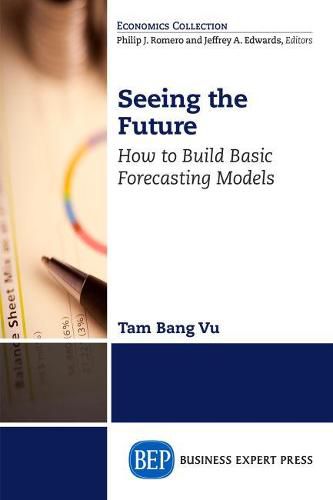Readings Newsletter
Become a Readings Member to make your shopping experience even easier.
Sign in or sign up for free!
You’re not far away from qualifying for FREE standard shipping within Australia
You’ve qualified for FREE standard shipping within Australia
The cart is loading…






This title is printed to order. This book may have been self-published. If so, we cannot guarantee the quality of the content. In the main most books will have gone through the editing process however some may not. We therefore suggest that you be aware of this before ordering this book. If in doubt check either the author or publisher’s details as we are unable to accept any returns unless they are faulty. Please contact us if you have any questions.
This book is written for business persons who wish to forecast consumer demands and sales. It is also designed for economic, financial, governmental, and private practitioners, who make decisions based on costs, benefits, economic trends, and growth. Finally, the book is written for first year MBA students, undergraduate students, and other readers who wish to acquire a fundamental knowledge of forecasting for the purpose of pursuing jobs in the fields of economics and finance, or for making personal plans for the future.
The book emphasizes applied aspects of forecasting rather than theoretical aspects, so a working knowledge of high-school statistics and college algebra is all the mathematics that is needed. Because regression-based forecasts do not appear until the last three chapters of the book, knowledge of econometrics or time-series modeling is not a prerequisite. Additionally, although each chapter is designed to be self-explanatory, a basic understanding of econometrics might be helpful, but not necessary.
The book discusses most of the forecasting methods frequently used in business and economics, such as time-series, demand and sales, investment, short-term planning, long-term growth, and regressions. To keep the book concise, only a brief introduction to the ARIMA process is introduced. Readers who wish to gain in-depth knowledge of ARIMA models are encouraged to read a book written specifically for time-series modeling.
$9.00 standard shipping within Australia
FREE standard shipping within Australia for orders over $100.00
Express & International shipping calculated at checkout
This title is printed to order. This book may have been self-published. If so, we cannot guarantee the quality of the content. In the main most books will have gone through the editing process however some may not. We therefore suggest that you be aware of this before ordering this book. If in doubt check either the author or publisher’s details as we are unable to accept any returns unless they are faulty. Please contact us if you have any questions.
This book is written for business persons who wish to forecast consumer demands and sales. It is also designed for economic, financial, governmental, and private practitioners, who make decisions based on costs, benefits, economic trends, and growth. Finally, the book is written for first year MBA students, undergraduate students, and other readers who wish to acquire a fundamental knowledge of forecasting for the purpose of pursuing jobs in the fields of economics and finance, or for making personal plans for the future.
The book emphasizes applied aspects of forecasting rather than theoretical aspects, so a working knowledge of high-school statistics and college algebra is all the mathematics that is needed. Because regression-based forecasts do not appear until the last three chapters of the book, knowledge of econometrics or time-series modeling is not a prerequisite. Additionally, although each chapter is designed to be self-explanatory, a basic understanding of econometrics might be helpful, but not necessary.
The book discusses most of the forecasting methods frequently used in business and economics, such as time-series, demand and sales, investment, short-term planning, long-term growth, and regressions. To keep the book concise, only a brief introduction to the ARIMA process is introduced. Readers who wish to gain in-depth knowledge of ARIMA models are encouraged to read a book written specifically for time-series modeling.